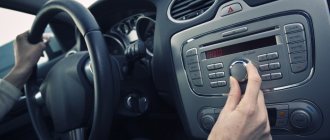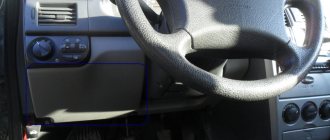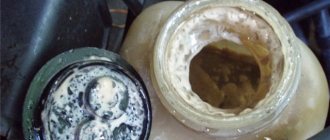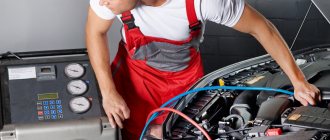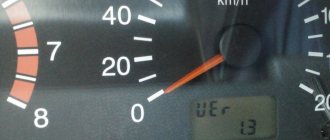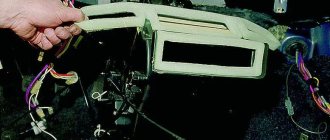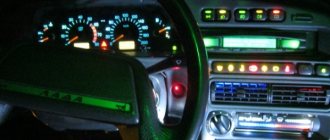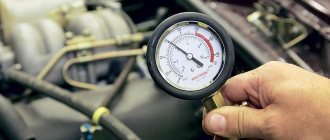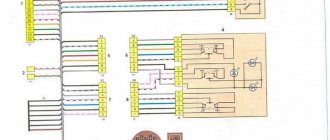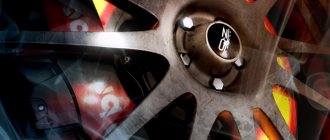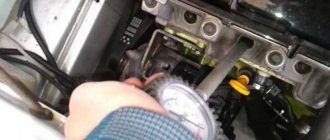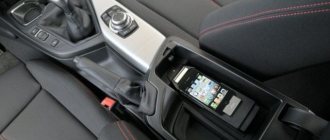A radio in a car is an integral accessory for the car interior, without which the trip may seem boring and monotonous to you. For many drivers, the radio in the car is a good “tonic” tool for keeping oneself in an alert state - the radio keeps them awake and entertains them during long trips.
But sometimes the radio begins to act up, receives the signal unevenly or poorly, hisses, strays from the set frequency, turns off and on spontaneously, works, sometimes louder, sometimes quieter - in general, it begins to irritate. Why does this happen, and how to return normal sound to the car interior?
The radio reception in the car is bad: What should I do?
Every car is equipped with a radio that no driver can do without. Regardless of what media you like to listen to music in the car, any driver actually uses the radio in his car from time to time. But sometimes the radio receiver can let us down and begins to receive the radio signal poorly. Well, this certainly begins to irritate many drivers. What to do in such a situation and what could be the reason for the poor performance of the car radio?
Buying Guide: Available Accessories for Your Vehicle
If the radio in your car begins to poorly receive a radio channel, this does not always mean that the car’s equipment or radio antenna is to blame. After all, the source of interference can be tall buildings, cell phone towers along the road, and even a flare on the sun itself, which can also cause electromagnetic radiation.
In most cases, when there is poor reception of radio channels, the reason lies precisely in external interference, and not in breakdowns of the car’s radio equipment.
So, friends, do not rush to contact electricians with complaints about your car’s radio equipment. First, you need to find out what is the reason for poor radio reception. Here are five main ways you can improve the signal reception of your favorite radio channels.
Possible faults
First, let's try to determine what caused the poor signal reception by the car radio.
The reasons may be varied. Here are perhaps the most common:
- antenna malfunction. The antenna can be damaged from the outside, this especially often happens in winter. The antenna plug may move away from the connection socket on the radio body due to vibration of the car when driving;
- the location of radio signal broadcasting devices at a very long distance or the presence of natural barriers along the way: mountains, large and tall buildings;
- presence in the immediate vicinity of power lines, railroads, cell phone towers and other electronic interference;
- failure of the radio tuner itself in the receiver. This can happen both in budget radios and in standard premium systems.
1) Check the car antenna
If your car is equipped with an external metal antenna, there is always a risk of damage to it, which will certainly lead to a deterioration in the quality of radio signal reception. For example, an external retractable antenna can get damaged at a car wash (car wash workers often move the antenna to avoid damaging it and then simply forget to retract it again). It can also be damaged by large birds living in the parking lot. Or else, the antenna in your car may become damaged due to the normal formation of ice during the winter season. This can especially happen during freezing rain, which can easily bend the car's antenna and even break it completely. Remember, friends, that even minor, unnoticeable damage to the external retractable antenna can significantly degrade the quality of radio signal reception.
Therefore, remember for the future, at the first sign of a drop in the quality of radio reception of the radio, you need to check the condition of the external car antenna.
It is likely that the external antenna of the car is simply not fully extended and therefore radio channels are received with interference. In this case, you just need to extend the antenna according to the car manual.
If your vehicle is equipped with an electric antenna that extends and retracts using a button, ice buildup may cause the antenna to not extend fully or completely. In this case, the signal will also be received with interference. Unfortunately, on many car models, antennas are usually installed out of the driver’s field of vision and you may simply not notice that the antenna is not fully extended. Therefore, in case of poor radio signal reception, be sure to check the condition of the antenna itself.
See also: 11 simple steps to develop a concept car
If the antenna is frozen and does not extend, then under no circumstances try to pull it out of the car body with pliers. This way you can not only damage the housing of the antenna itself, but also touch the electromechanical mechanism that extends it from the car body.
Skoda Club Belarus (Skoda car lovers club)
Unshielded cables emit noise due to common-mode noise flowing through their copper conductors, that is, high-frequency current flowing in the same direction throughout all cable conductors. This current creates a magnetic field of a certain magnitude and direction.
Ferrite is a ferromagnet that does not conduct electric current (that is, in fact, ferrite is a magnetic insulator). Eddy currents are not created in ferrites, and therefore they are very quickly remagnetized - in time with the frequency of the external electromagnetic field (the effectiveness of their protective properties is based on this).
Cable ferrite attenuates noise currents by trapping the magnetic field and dissipating some of its energy as heat. In electrical engineering terms, a ferrite element placed on a cable creates a high active impedance for common-mode currents.
Previously, costly shielding of cables with copper braid was used to attenuate noise currents.
The use of cable ferrites has reduced the cost of cable shielding and increased the efficiency of interference suppression.
At first, these ferrite filters appeared on monitor cables (naturally: after all, the quality of the “picture” is greatly influenced by all sorts of interference!), then they gradually spread to other peripherals, and now almost all cables are equipped with ferrite filter cylinders: monitors, printers, scanners, photocopiers, video cameras, digital cameras, keyboards and even cable mice.
Ferrite rings without a shell can also be found inside the system unit.
How to Increase the Noise Reduction Effectiveness of Cable Ferrite
1. Increase the length of the cable part covered by the ferrite core.
2. Increase the cross-section of the ferrite core.
3. The inner diameter of the cable ferrite should be as close as possible (ideally equal) to the outer diameter of the cable.
4. If the design features of the cable-ferrite pair allow, you can make several turns (usually one or two) of the cable around the ferrite core.
To summarize the above, the best ferrite core is the longest and thickest that can be placed on a particular cable. In this case, the internal diameter of the cable ferrite should, if possible, coincide with the external diameter of the cable.
How to use cable ferrite
Sometimes on sale you can find detachable cable ferrites in a plastic shell (heat-shrink tube) with two latches. How to use them?
The open ferrite cylinder is placed on the cable, which must be protected from electromagnetic interference and interference, approximately 3 cm from the cable tip. A loop is made around the cylinder shell. After this, the shell snaps into place. For reliability, you can equip the other end of the cable with a ferrite cylinder.
Goodbye interference, hello undistorted signal.
Wikipedia article
, dedicated
Now I understand why Wikipedia
very often criticized...
2) Check antenna connections
The most common cause of poor radio reception in a car is a poor connection between the car radio and the antenna connector. The point is this: if the antenna cable has a poor connection with the radio itself (with the radio tuner), then the quality of such radio transmission from the antenna to the receiver will be low. As a result, you will periodically hear interference or only noise on the radio. Unfortunately, over time, due to frequent vibration of the body, many of the car’s wire connections weaken and are often still susceptible to corrosion from moisture entering them. This also applies to the connectors themselves, which connect the radio receiver to the antenna. Ultimately, the driver begins to experience difficulties in setting up high-quality radio channel reception.
New Apple iPhone 7 doesn't have a headphone jack: What does this mean for your car?
Thus, if you encounter poor-quality sound when listening to the radio in a car, then immediately after checking the antenna for damage, please inspect the cable connecting the antenna to the radio. To do this, you will need to remove the radio installation from the car or, as a last resort, simply push it forward from the center console so that you can inspect the back of the tuner, where the connector for connecting the antenna cable is located.
If during a visual inspection you do not find any problems with the connector, then do not rush to install the radio back. Please be aware that the cable or connector may have hidden damage. Therefore, you need to turn on any radio channel on the receiver that works with interference along with the sound in order to listen to all extraneous noise. Then you need to move the antenna cable (for example, you can move the radio antenna connector). If the connection is reliable and tight, then you will not hear any changes in the sound of the radio channel. If you hear noise or a similar crackling noise, then most likely either the antenna cable or the connection connector itself is damaged.
Indirect radio interference
These include various parasitic waves, which in our time literally permeate the entire ether. If the radio does not have filters capable of filtering out this kind of interference, the radio receives poorly, hisses, crackles, clicks and does everything it wants, just doesn’t play. You can make sure that the signal is poorly received due to indirect radio interference if you get rid of it for a while.
First of all, check the operation of the radio in the car by turning off or removing the mobile phone, navigator and other non-standard devices from the cabin. In addition, quite often they try to set up radios near residential buildings. And they have microwave ovens, televisions, computers, Wi-Fi routers and other electronics that somehow emit waves into the air. Of course, a good radio can filter all this garbage. But is it like that for you? Power lines can also affect the quality of radio reception. Accordingly, if you move away from all the listed benefits of civilization, you can see whether they or not they worsen the performance of the radio in the car.
3) Buy a new radio antenna for your car
When checking the connection between the antenna and the radio, you may find that the car's antenna has signs of rust, or dents, or even small breaks, then without installing a new antenna, you will not be able to return good signal reception to the previous level. Please note that rust can damage not only the antenna mast, but also its connectors at the very point of connection with the cable that goes directly to the radio tuner in the car's head unit.
Also, many modern cars are now equipped with new types of radio antennas. This type of antenna is a mesh sticker that is glued to the rear or side windows of the car. These flat panel radio antennas have some aesthetic advantages over external metal car antenna masts. Firstly, the mesh antenna is glued inside the car and cannot be damaged at a car wash, as well as by birds in the parking lot or from the formation of ice.
See also: Five car hacks that actually work
But to our regret, such flat antennas do not receive radio signals very well. This becomes especially noticeable in large cities and hilly areas. Also, the main disadvantage of this antenna on glass is its fragility and if it is damaged, it becomes necessary to purchase a new antenna. Moreover, it can be damaged very easily by simply touching the glass with something sharp.
So, friends, keep in mind that, despite new technologies, an external antenna on the body of a car still has a number of advantages in terms of the quality of radio signal reception.
Possible reasons for a bad signal
It’s not difficult to figure out why the radio doesn’t pick up the radio. First of all, the problem is explained by malfunctions in the antenna. If the cable shield is damaged, the signal will be of low quality with a lot of interference. If the wire has been deformed or broken, the connector has become loose, or the plug that is inserted into the radio has come off, the radio may stop functioning altogether.
When using an active antenna, poor signal reception quality will be due to the lack of power connection to the amplifier. Another problem is explained by poor contact between the receiving dipoles and the amplifier module, which occurs as a result of oxidation processes or deformations.
The next reason why radio reception is poor is a large distance between the repeater or radio tower and the receiver or strong interference of artificial and natural origin, which prevents the normal movement of the signal.
Sometimes motorists notice that the signal deteriorates after starting the windshield wiper, heating system or washer.
Budget radio models made in China begin to malfunction and experience interference due to the presence of other electronic systems in the cabin. This often happens after starting the DVR.
Well, one of the most common causes of interference is problems with the tuner itself. Also, as the system is actively used, damage to the speakers occurs. As a result, they produce wheezing and crackling noises that interfere with the normal setup of the radio.
4) Install a radio signal amplifier in the car
Usually, in the case of poor-quality radio signal reception, the radio amplifiers installed in the car are not very effective. Especially when the reason for the poor-quality sound of a radio channel is due to a broken antenna or wear of the antenna cable or connectors. But usually with this type of damage, poor reception of all radio channels without exception is observed.
But sometimes, even with working radio equipment, each driver may encounter uncertain reception of just a few radio channels. What then should be done in this case? Indeed, the power of the radio signal from all radio stations is different and radio channels can indeed be received differently by our car radio equipment. How, then, can you tune your favorite radio channel to high-quality sound?
In this case, radio amplifiers can come to your aid. But remember, friends, that if this interference when receiving a radio station is associated with high-rise buildings or terrain features, then no radio signal amplifier will help you.
Poor quality car radio circuitry
This has already been said a little above. If the radio is initially poorly made, then, most likely, even super-expensive active amplifiers will not help make you pick up the radio as it should. How to check? One way is to disassemble the car radio. Find microcircuits marked SAA or TEA on the board, and carefully follow the tracks that extend from them. If you find empty spaces along the way intended for some radio components, it means the manufacturer has saved money, and the radio should not play normally.
Craftsmen in such cases sometimes improve what the manufacturer screwed up. However, all this requires knowledge in the field of radio electronics, and is not always worth the lost time. Nevertheless, as an option to improve radio signal reception and get rid of interference, it has a right to exist.
5) Change the radio
In general, all radio tuners in the music head units of modern cars that were installed when the cars were assembled[/anchor] are quite high quality for reliable reception of radio channels. But unfortunately there are exceptions and not all radios were created equal to each other. For example, it is not uncommon that even expensive digital audio units, while providing incredible high-quality sound from CD/DVD media, are equipped with a not very high-quality radio tuner. Moreover, such low-quality radios are also found in expensive premium cars. Sometimes the quality of reception of the radio signal itself in economy class cars is even better than in the same luxury cars.
How to Choose a Parking Spot: The Ultimate Guide
So, friends, remember for the future, if you checked all the radio equipment and could not establish the reason for the poor-quality radio signal reception, but you still cannot do without the clear sound of radio channels, then you will most likely have to change your standard radio to a higher-quality model that will have a more advanced radio tuner.
When choosing a radio, pay attention to the brand and its cost. Remember that cheap copies will not be able to provide you with high-quality signal reception and radio operation in your car. Good luck to all friends!
How to improve the signal
When wondering what to do if the radio signal is bad and unstable, the first step is to determine the cause of the problem. Next, you need to use one of the available methods to improve reception.
For example, sometimes interference disappears after installing an active antenna, which is equipped with an additional amplifier. A homemade power filter is also attached to the radio. You can make it yourself using improvised materials. To do this, you need to make a couple of turns of a thin cable on the ferrite core. One end of the inductor is connected to the power source, and the other to an oxide capacitor or a plus plug from the car radio.
Then the finished structure is fixed in a small stainless steel or tin case and connected to the mass. You will also need to undersell the negative terminal of the capacitor.
The efficiency of signal filtering depends on the number of turns. Accordingly, the more there are, the cleaner the reception.
A good filter is able to suppress any interference that occurs in the power circuit. If after performing these steps the problem remains, you need to figure out ways to eliminate noise due to the operation of an electric motor or electronic devices inside the car.
Purchasing and replacing an antenna
A good way to improve radio reception in your car is to buy an antenna. Modern antenna models are compact in size and are fixed inside the car, so they are not exposed to precipitation. However, if the windshield is damaged, the antenna will also have to be replaced.
Having selected the desired antenna model, you must connect it in accordance with the instructions. First of all, you need to fix the base with the reception sensors on the windshield, maintaining a distance of 25 mm from the body frame. Otherwise the signal will be bad.
Next, the active antenna module is installed. At this stage, the power cord needs to be plugged into the radio plug. It comes in blue with a white stripe.
Amplifier installation
To strengthen the antenna signal, you can purchase special amplifiers. They are designed to improve reception over long distances from a radio tower or transmitter. In tandem with an amplifier, the standard antenna becomes highly sensitive, which has a positive effect on the sound and reduces the amount of interference.
Replacing the radio
If the sound floats when listening to the car radio, the noise becomes intense, and the sound is accompanied by strong interference in the speakers, the possibility of failure of the device cannot be ruled out. Cheap Chinese systems suffer from this problem much more often than advanced Japanese devices, including the Viget 6906 (Toyota). What you can do to improve the sound quality and timbre is to connect a new car radio.
Interference on the radio power line
Even if the car does not have any devices such as a DVR or a mobile phone charger, radio interference may be due to the direct power supply to the radio. There are still a lot of things in the car that generate spurious signals into the on-board network. This includes the ignition system, the generator, and standard electronics.
To get rid of such interference, it is best to buy a special filter that is installed in the power supply gap of the car radio. They are inexpensive, and the effect, as they say, is immediate. You can also make a fairly effective food filter with your own hands. From just one radio component. It's called inductance. These radio components can be found in any broken radio, television and other devices. The inductance is soldered into the gap of the positive power wire of the radio on either side (it has no polarity). And the radio component looks like this.
The most common solutions to the problem
3. Pay attention to the connection with the antenna. Most likely the problem lies in the connection. The equipment could succumb to the passage of time and fail. To fix the problem, you need to check the quality of the antenna. Next, try to fix it yourself or seek help from a specialist. As a last resort, you should buy a new antenna and install it.
4. Problems with the radio. This point is closely related to the second. Also, first you need to check the operation and quality of signal transmission. And if there are no problems with the antenna, then you need to tune the radio. Using the instructions, you need to identify and analyze the problem, and then decide what exactly to do.
5. Replacement of a non-working device. There are few repair options: fix the problem yourself, contact a specialist, or even buy a new one.
The radio has become the driver's constant companion. They listen to it always and everywhere, use it to learn news happening in the country, and enjoy their favorite musical compositions.
Therefore, when you notice the first problems, you should begin to eliminate them. For example, on your own or with the help of a master. When choosing a new radio, pay attention to the manufacturing company. It is necessary to analyze customer and user reviews, as well as review other brand products.
You need to focus, of course, on personal preferences and personal criteria that you set for yourself before purchasing. The design of the equipment should also not be ignored. They are usually black, but you can look for more interesting color palettes.
It is important to remember that no problems should be left unattended. It would seem that a radio breakdown is an insignificant and little-impacting thing. However, it is not. By turning a blind eye to small things, you may not notice big problems. Therefore, as soon as you notice malfunctions in the radio, take action.
The very first of them is an analysis of the settings that most likely have gone wrong. Then try changing the wave and changing the broadcaster. Afterwards, more drastic actions come - buying a new radio or antenna or repairing old ones. If you are confident in your abilities, then try to repair it yourself; if not, then contact a specialist.
Source
